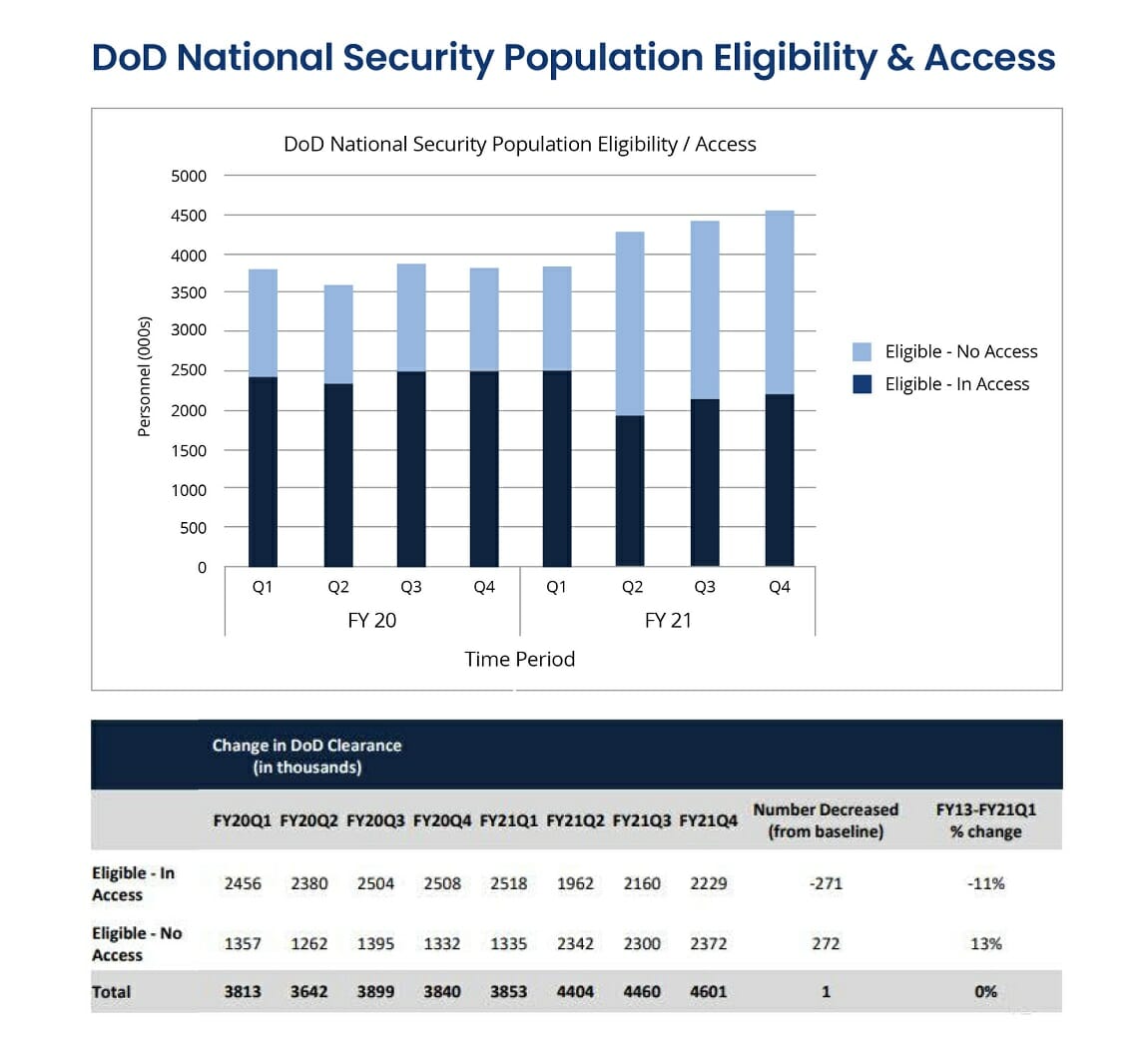The security clearance population can be divided into two populations, those in access, and those eligible. Both numbers combine to make up the total figure of cleared individuals at any given time – a figure that has shown deep fluctuation, from being near five million in 2011 to dropping to less than 3.5 million in Fiscal Year 2017. The current baseline number is 4.6 million, as reported in the most recent quarterly progress report offered by the Security, Suitability, and Credentialing Performance Advisability Council.
The most recent PAC update offers figures for a variety of key areas, from continuous vetting enrollment to current clearance processing times. But one of the most interesting is seeing the affect of COVID office closures on the clearance in-access population. In Q1 of FY 2021 the eligible-in access population went from 2.51 million to 1.96 million in Q2 of FY 2021. The in-access population jumped up by 100,000 each quarter, but still remains 271,000 down from the baseline.

What Does Fewer in-access Clearances Mean?
Fluctuations in the clearance in-access population don’t necessarily mean fewer overall cleared workers – the total number of clearance holders actually steadily increased across the early quarters of FY 2021, indicating the Defense Counterintelligence and Security Agency’s measures to continue to move cases forward worked. But seeing the in-access cleared population remain low means there may be some segment of the cleared population who has found themselves in non-cleared work to stay.
Remote work saw rapid adaption across government as agencies looked to keep personnel safe and provide required flexibility. Once vaccinations became widespread, many agencies returned to their exact pre-COVID protocols. But some security clearance holders remain in ongoing remote statuses. The wild card is if those eligible populations will go back into clearance access status, and what cadence they do so.
Is Your Clearance Current?
Continuous Vetting has created one new question around security clearance eligibility, and that’s how long a clearance remains ‘current’ before you expire, even after you’ve left a cleared position. Clearance investigation date used to be the litmus, but with periodic reinvestigations going the way of DISCO, some individuals are asking if the two-year eligibility rule still applies. That’s a question DCSA is also asking, as it considers if the two-year period is still relevant under Trusted Workforce 2.0.
The broader question around the latest DoD clearance figures is what this will mean for the clearance population going forward. DCSA has proven it can move clearances through the process relatively quickly. Hopefully ODNI doesn’t decide to opt for desk audits any time soon, or changes in how current clearances are defined for the eligible population. One thing COVID has demonstrated is the need for agility. And in the current national security market most employers are saying they need all of the cleared professionals they can get.




